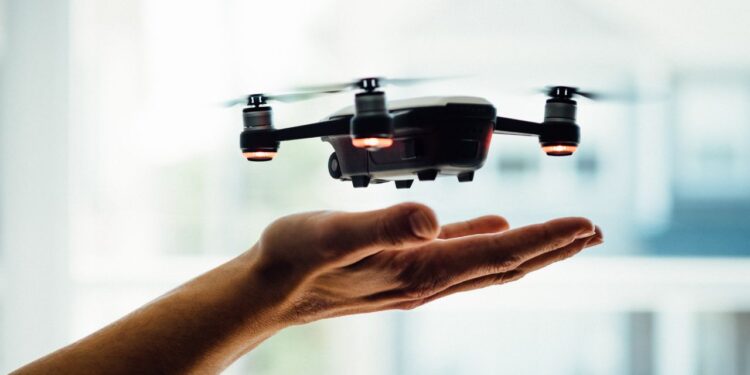- Drones have entered into countless occupational markets.
- Drones are quickly becoming an instrumental tool in all industries; they provide high-definition imagery and data that can be processed quickly and disseminated to decision makers in near real time.
- In a Q&A with Brendon Bartholomew, president of Vector Aerial, he explained the impact that drones will have on the workforce.
New innovations and a lack of workers in the current post-pandemic economy have led to the deployment of robotic coworkers in some industries.
According to the International Federation of Robotics, there are currently more than three million industrial robots operating around the globe.
Implementing “robots,” which includes AI and drones, brings down costs for companies (because robots don’t need to be paid), but this begs the question of how prevalent this new technology will be within the workplace.
Drones have entered into countless occupational markets to help lower workplace injuries and fatalities. As for the office setting, in the future employees may be working amongst drones, according to Brendon Bartholomew, president of Vector Aerial.
In a Q&A with Bartholomew, he explained the impact that drones will have on the workforce.
Allwork.Space: How will drones affect the future of work?
Brendon Bartholomew: Drones are quickly becoming an instrumental tool in all industries. They provide high-definition imagery and data that can be processed quickly and disseminated to decision makers in near real time. In the preponderance of use cases, drones provide users with two major benefits: efficiency and safety. From an efficiency standpoint, drones can accomplish the work that previously required teams of people, and usually in a fraction of the time.
Combined with systems to process the data, drones provide highly refined information to users in a rapidly evolving world. And, as we develop and integrate AI, we’ll see this evolution accelerate exponentially. From a safety standpoint, drones allow visual observations that previously required manned aircraft (which is very expensive) or putting personnel in very dangerous positions (i.e. climbing a tower). The use of drones can get users imagery that was previously either too difficult or even impossible. The use of drones will continue to revolutionize the way we work with increased levels of efficiency and safety.
Allwork.Space: Will drones one day be commonplace in the office setting? What will be their purpose?
Brendon Bartholomew: Drones have already become commonplace in many professional settings. Their capabilities are nearly endless and they provide users with a level of data and information that wasn’t previously possible. Today, a single drone operator can gather data faster than entire teams of personnel could do previously.
It’s not just the availability of near real-time (NRT) imagery; with powerful processing software, the data gathered by drones can quickly and efficiently be delivered to decision makers in construction, energy, agriculture, public safety, and numerous other industries. As drone technology continues to develop, it is quite possible drones will integrate into the traditional office setting, and day-to-day life eventually.
Allwork.Space: What future markets and industries will drone tech be a part of?
Brendon Bartholomew: As I mentioned before, drones are already a critical part of most major industries. For example, the energy sector uses drones for inspections on pipelines, refineries, offshore platforms, solar farms, wind farms, and more. The agriculture industry uses drones to provide data on the health of crops, plant counts, cattle counts, and 3D-mapping to provide unprecedented levels of information to farmers.
Mining companies are using drones for volumetrics. Public safety officers are using drones in law enforcement, firefighting, and disaster response. Construction companies are using drones for aerial imaging and project management. Drones have even been seen delivering food! It would be hard to imagine an industry that won’t be using drones and drone technology moving into the future.


 Dr. Gleb Tsipursky – The Office Whisperer
Dr. Gleb Tsipursky – The Office Whisperer Nirit Cohen – WorkFutures
Nirit Cohen – WorkFutures Angela Howard – Culture Expert
Angela Howard – Culture Expert Drew Jones – Design & Innovation
Drew Jones – Design & Innovation Jonathan Price – CRE & Flex Expert
Jonathan Price – CRE & Flex Expert












